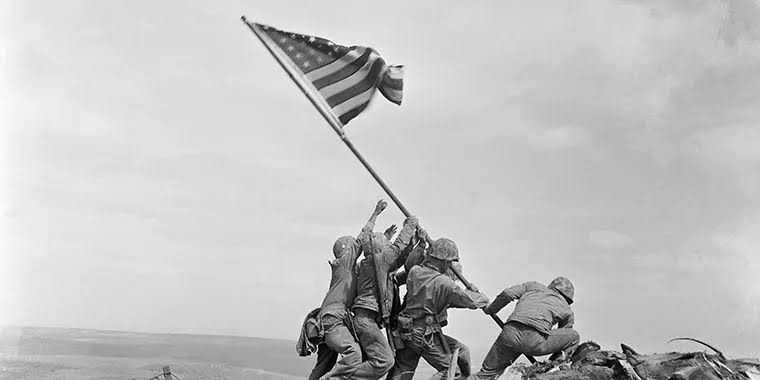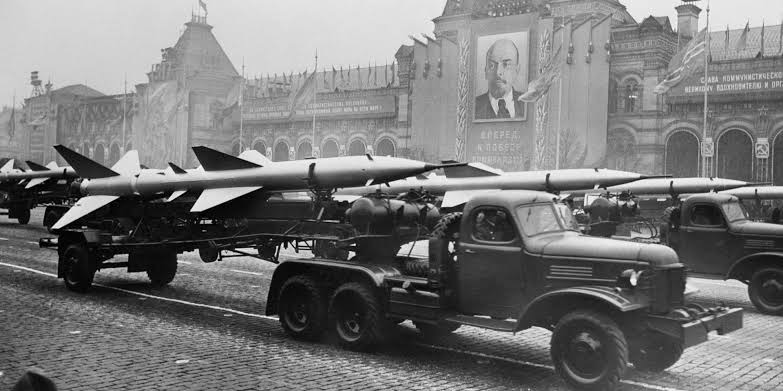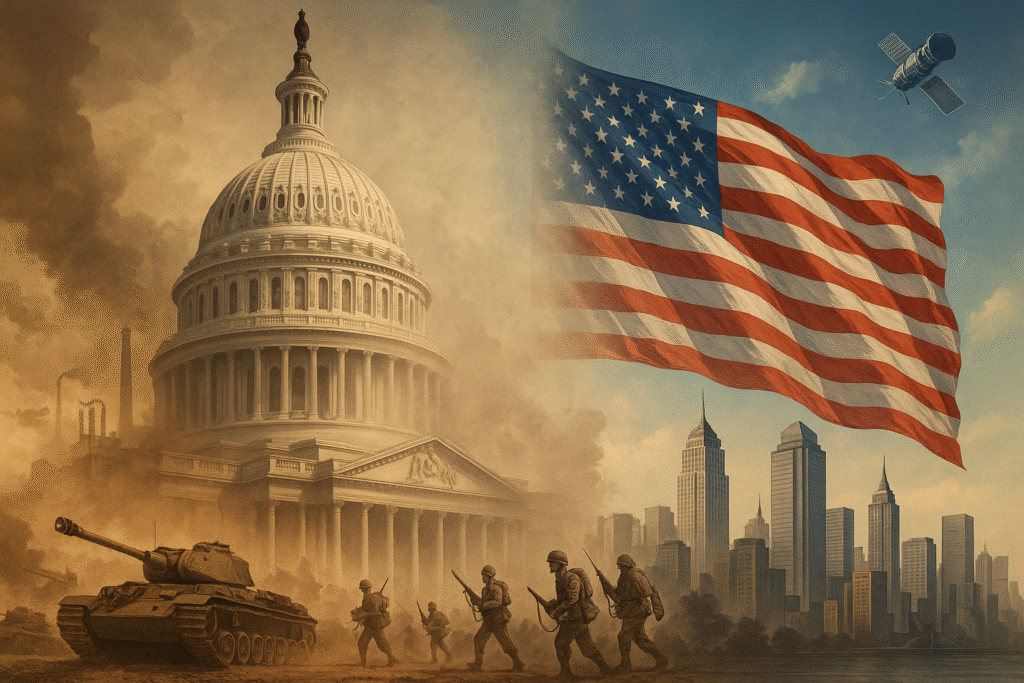🗓 Published on: June 26, 2025
✍️ Written by: Najeeb Ul Haq Ustad
Introduction

When the United States of America first began, it was a collection of British colonies. After gaining independence in the late 18th century, it gradually started to achieve international recognition. However, the United States did not become a true worldwide superpower until after World War II. How could a young country that had been colonized become the economic, military, and cultural leader of the world? From a war-weary country in the early 20th century to the dominating force forming the contemporary world order, this blog examines that transition.
1. The pre-war stance: an expanding but secluded power
The United States was already a major industrial power before World War II. Its economy grew significantly in the 19th and early 20th centuries as a result of the following factors: the Industrial Revolution; westward migration; labor force mobility; and technological advancement.
The United States was still primarily isolationist militarily and politically, though. Following its involvement in World War I, it swiftly left European politics. Domestic problems, such as the Great Depression, took precedence over international influence throughout the 1920s and 1930s.
2. WWII: The Impetus for Becoming a Superpower
The pivotal moment came during World War II. The U.S. mainland was unaffected by the war, although the majority of Europe and Asia were devastated. It developed into the democratic arsenal, providing food, weapons, and assistance to allies through initiatives like Lend-Lease. WWII had a major impact on the development of the United States. • Military Expansion: More than 12 million Americans served, and extensive military infrastructure was constructed.• Economic Boom: The Great Depression was ended by war production, which also made the United States the industrial superpower of the globe.• Technological Developments: The atomic bomb, jet engines, and radar were created.
The United States was the only nation possessing nuclear weapons and accounted for more than half of the world’s industrial production by 1945. It also spearheaded the United Nations’ establishment.
3. Influence After the War: Establishing a New Global Order
The Marshall Plan
The United States started the Marshall Plan in 1948, providing more than $12 billion (about $150 billion now) in help to Europe in order to rebuild war-torn Europe. In addition to aiding in recovery, this stopped communism from spreading and brought Europe into line with American interests.
Bretton Woods System
The US contributed to the creation of international financial institutions:The United States dollar was established as the world’s reserve currency by the World Bank and the International Monetary Fund (IMF). For many years, these organizations guaranteed American economic supremacy.
4. The Arms Race and the Cold War

The Soviet Union’s ascent produced a bipolar world, although the United States led the way in the following areas: military bases in Europe, Asia, and the Middle East; NATO (North Atlantic Treaty Organization); and the containment policy to prevent the spread of communism. The Cold War forced the United States to innovate, which resulted in the space race, NASA, nuclear deterrent, and sophisticated military systems. The United States maintained its position as the world’s leading nation in spite of obstacles including the Vietnam War and domestic political turmoil.
5. Extension of Cultural and Soft Power

After World War II, American culture expanded around the world through fast food restaurants and Hollywood films. The United States grew to represent democracy and free expression, capitalism and consumption, and technological innovation, which eventually gave rise to firms like Apple, Microsoft, and Google. The “American Dream”—a life of liberty, prosperity, and opportunity—became a universal goal.
In conclusion

There was a reason why the United States went from being a British colony to becoming a superpower. It was propelled by cultural influence, political leadership, military might, and economic tenacity. In the decades that followed World War II, the seeds sown during that conflict grew into an empire of influence.
One of the most fascinating periods of modern history, the tale of America’s emergence continues to shape how states rise and fall on the international scene even as global dynamics change.
